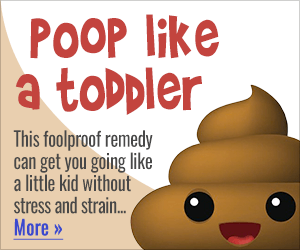Get Easy Health Digest™ in your inbox and don’t miss a thing when you subscribe today. Plus, get the free bonus report, Mother Nature’s Tips, Tricks and Remedies for Cholesterol, Blood Pressure & Blood Sugar as my way of saying welcome to the community!
9 types of cough and how to treat them

Cough is the most common complaint of all at busy Urgent Care Centers all over the country — during all seasons of the year, and even more during the winter months.
So, I thought it would be helpful to look at the several different types and causes of coughs and their treatments since we’re not always sure when we should get checked out.
Just remember, it’s always best to err on the side of precaution, especially now that COVID is part of the picture. Some people who get COVID can develop pneumonia and need specific care. However, if you’ve tested negative for COVID and still have an annoying cough, you may find this list helpful…
1. URI with cough and congestion
Upper respiratory infection (URI) with cough and congestion definitely tops the list. It typically begins with a scratchy sore throat, worse at night, followed by a dry cough with a stuffy/runny nose. Appetite is unchanged, there is no fever or chills, and energy levels remain near normal. Lung examination reveals normal breath sounds.
Why do people come to see a doctor for this condition? They are either in fear of getting pneumonia (rare), mistakenly believe antibiotics will cure their viral condition, or simply want a strong prescription cough medicine so they can sleep.
My favorite prescription cough suppressants for this condition are Tessalon Perles (benzonatate) for the daytime (non-sedating) and Promethazine DM at bedtime (somewhat sedating). You can add Nyquil (over the counter) which contains the sedating ingredient diphenhydramine (a.k.a. Benadryl).
2. Influenza A
The flu causes body aches, fever, chills, lack of appetite (“malaise”), severe fatigue and a painful bronchitis cough. Green, yellow, brown, or bloody sputum can present in the first few days (I had this two years ago). Lung examination reveals normal breath sounds.
My favorite prescription medicines for this condition are a) Tramadol for pain, b) suppressants used for URI cough (see above) and c) Tamiflu if started within the first 48 hours of symptoms onset.
Related: The little berry that offers big protection against the spring flu
3. Bronchitis
Viral bronchitis is simply a chest cold in nearly all cases. It causes coughing with colored sputum and fatigue. However, appetite is normal and there is no lateral chest pain or shortness of breath. Lung examination reveals normal breath sounds.
My favorite prescription cough suppressants for this condition are Tessalon Perles (benzonatate) for the daytime and Promethazine DM at bedtime.
4. Allergic rhinitis
Appetite is unchanged, there are no fever or chills, and energy level remains near normal. Lung examination reveals normal breath sounds. Cough is dry or wet, with the hallmark symptom of stuffy/runny nose, lasting much longer than a virus (URI) lasts… often for months and usually worse during the spring season.
This is caused by something in the environment or even food. Consider doing a simple targeted “food elimination” experiment. Begin by eliminating gluten (bread, pasta, cereals with wheat flour, etc.) for 4 weeks. Then reintroduce gluten food products back into your diet for at least 3 days and watch for a recurrence of symptoms. You may have an answer quickly with the recurrence of a symptom involving your skin, joints, pain level, sleep, mood, or energy level. Then, do the same with foods containing dairy, peanuts, soy, eggs, corn, and even with refined sugar foods (the top 7 allergy-causing foods).
For rapid treatment of symptoms, there are the over-the-counter antihistamines and Flonase nasal spray or move to the prescription prednisone as described for asthma below.
5. Asthma
This is easy to diagnose by watching the patient breathe. Appetite is unchanged, there is no fever or chills, energy levels remain near normal and their cough is dry. Lung examination reveals wheezing on inspiration, expiration, or both.
This too is caused by something in the environment or even foods. Consider doing a simple targeted “food elimination” experiment as described above.
The treatment is almost always a short course of high-dose prednisone (corticosteroid) such as 60 mg daily for 3-4 days, and tapering, for 7 to 10 days. Also, albuterol, inhaled or nebulized, can open the small airways every 4-6 hours until prednisone is effective (takes 3 days).
6. Pneumonia
This is the easiest to diagnose and treat. There is a fever longer than 5 days, a lack of appetite, fatigue, and lateral chest pain with a wet cough. Lung examination reveals rough “rhonchi” sounds (or just decreased airway movement) in the affected lung. The treatment is simple: antibiotics such as Amoxicillin, Doxycycline, or Azithromycin; and lots of fluids by mouth and rest.
7. COPD
This chronic dry or wet cough condition can turn to pneumonia when an acute exacerbation of symptoms occurs, typically due to a viral infection. The treatment is usually a short course of Prednisone to open the airways, and an antibiotic (e.g. Amoxicillin).
8. Whooping cough (pertussis)
This is not a common condition, but in rare cases can be very scary (death) in babies. The persistent coughing followed by an inspiratory “whoop” is the classic presentation. The challenge with whooping cough is that it is contagious in the very early stages of the illness… sometimes even before symptoms become evident. Therefore, antibiotics should be started even before test results are known.
9. Congestive heart failure (CHF)
This subtle chronic cough is accompanied by shortness of breath, weight gain, leg swelling, and wet-sounding lungs on examination. Prescription diuretic medications and close follow-up by a cardiologist are needed. Cough suppressants don’t do much for this.
Natural cough remedies
As a doctor, I believe it’s important to diagnose the cause of any cough. I also have read the research behind old-fashioned or natural cough remedies and feel they can help in some situations…
Nattokinase is a naturally occurring enzyme discovered in a fermented soybean dish popular in Japan. Recent research has found it is capable of thinning mucus, which can make a cough more productive and ease symptoms. Because the enzyme effects are promising, researchers are now delving into how it could be used to improve symptoms of other respiratory problems, like bronchitis and even COPD.
Honey has much more than anecdotal evidence behind its cough-suppressing claims. An Oxford University review analyzed data from 14 clinical trials and found that honey was 36 percent better than over-the-counter cough and sinus medicines at reducing coughing, and 44 percent better at reducing the severity of a cough.
Black seed oil comes from the Nigella sativa plant and has been the subject of research into its effects as a therapeutic agent for respiratory problems, allergies and even asthma.
Keep this list close at hand, especially if you have a mild cough that lingers and you’ve ruled out infection as the cause. But as a side note, black seed oil may be worth taking year-round as a preventive. It has several immune-boosting properties that may reduce your risk of catching something that could leave you with a cough in the first place.













